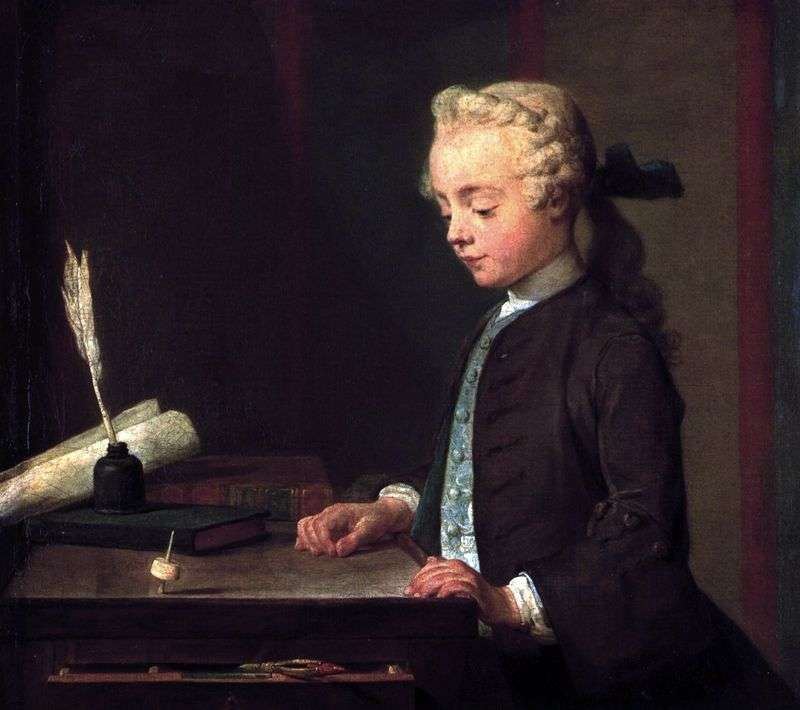
Children’s portraits of Chardin’s brush still fascinate viewers. Even if they are encased in uncomfortable, “wooden” jackets and heavy dresses, the children in the master’s paintings still look spontaneous and mobile. Working on a children’s portrait, Sharden preferred to depict the child “in action”, engaged in some kind of work. Exhibiting children’s portraits, he, again, called them usually not “portraits”, but genre scenes.
Such “scenes” in the creative heritage of Chardin abound. Among them, for example, is the painting “A Boy with a Yule.” It was shown in the Salon of 1738 and immediately became so popular that the artist wrote a few more works, varying the theme of playing a boy with a top. Above you can see a copy of “The Boy with the Yule,” made by the author in 1741.
The engravings from the Chardinov children’s portraits, as a rule, were supplied with the signature of moralistic content. So, on the engraving made with “The Boy with the Yule,” we read: “By giving ourselves wholly to the hands of Fate, a person turns into an infinitely spinning top.” Need I say that Chardin had nothing to do with the moral sentiments of this kind? On the next page there is a picture “Girl with a flounce”, written by the master in a couple of “House of Cards”.
This portrait of a young lady, flushed from playing a shuttlecock, is undoubtedly one of the masterpieces of the French genre painting of the 18th century. Remarkable are also the “educational pictures” of Chardin, which include, in particular, “Prayer before dinner,” where the artist clearly expresses his point of view on the problem of “education of good morals”, so caring philosophers of the time.
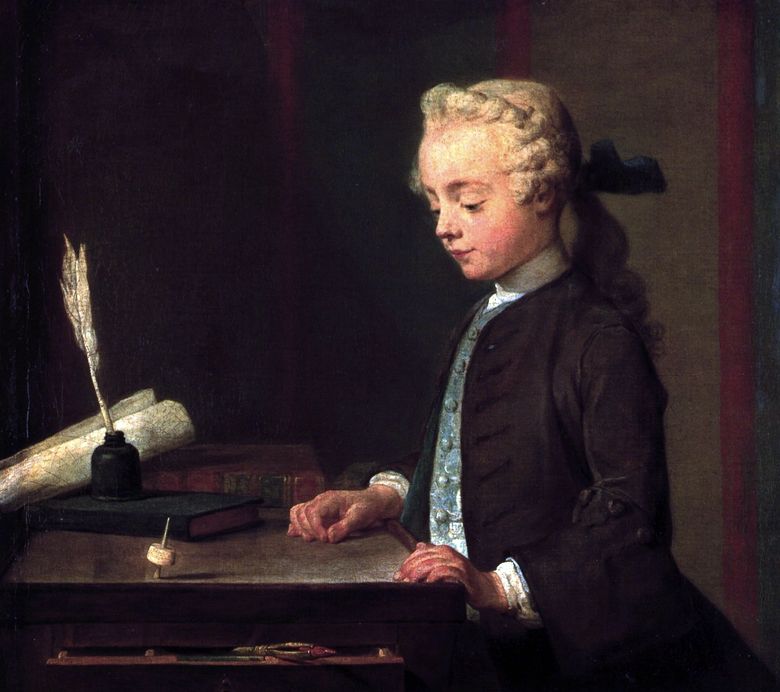 Garçon avec Yule – Jean Baptiste Simeon Chardin
Garçon avec Yule – Jean Baptiste Simeon Chardin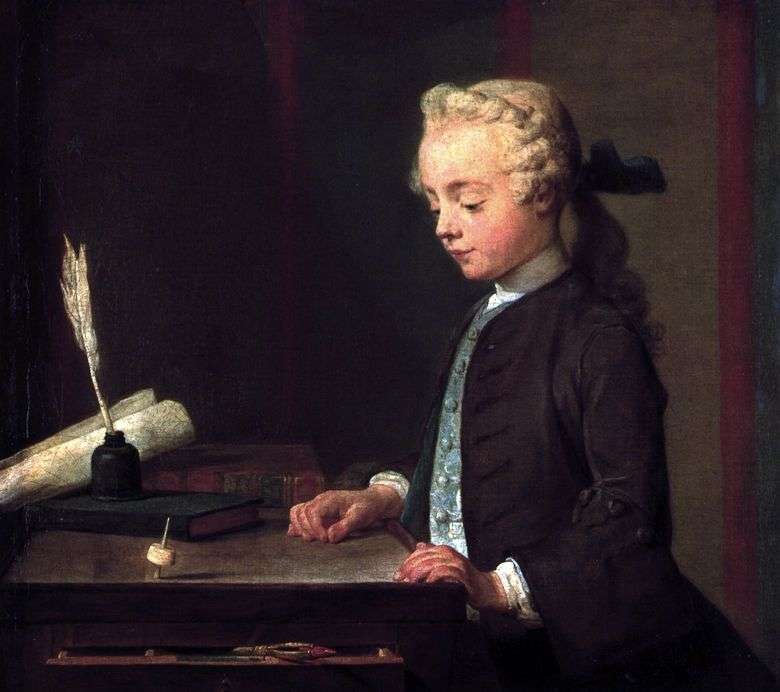 Chico con Yule – Jean Baptiste Simeon Chardin
Chico con Yule – Jean Baptiste Simeon Chardin Portrait of the artist Joseph Aved by Jean Baptiste Simeon Chardin
Portrait of the artist Joseph Aved by Jean Baptiste Simeon Chardin Laundress by Jean Baptiste Simeon Chardin
Laundress by Jean Baptiste Simeon Chardin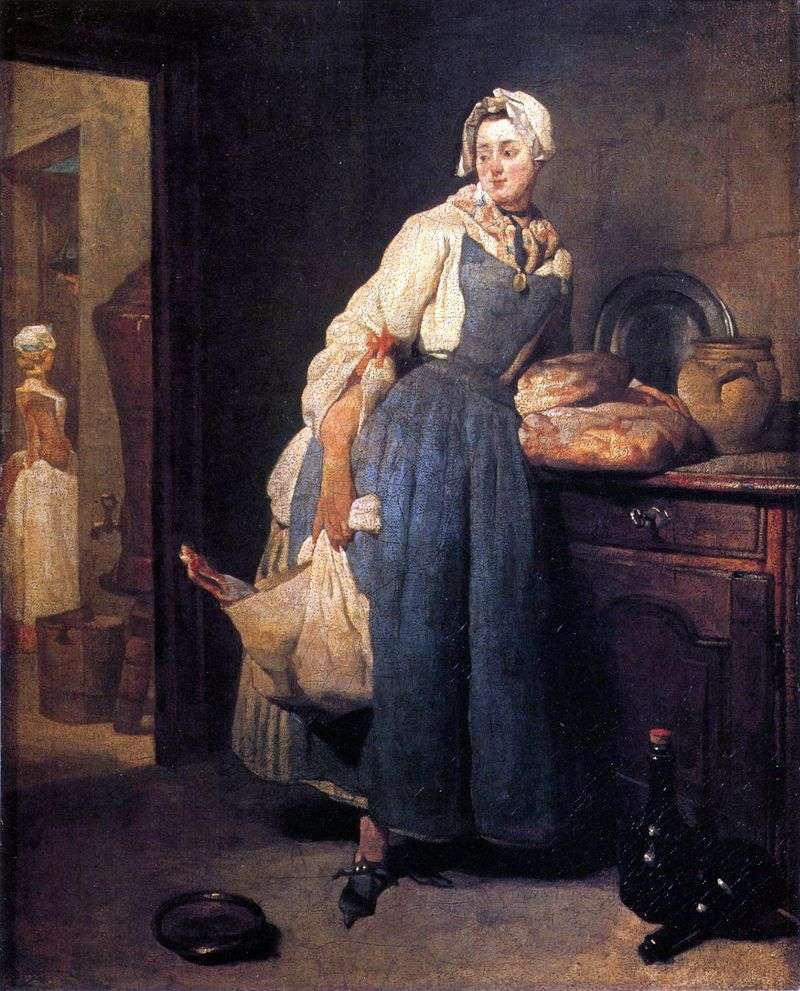 Spies by Jean-Baptiste Simeon Chardin
Spies by Jean-Baptiste Simeon Chardin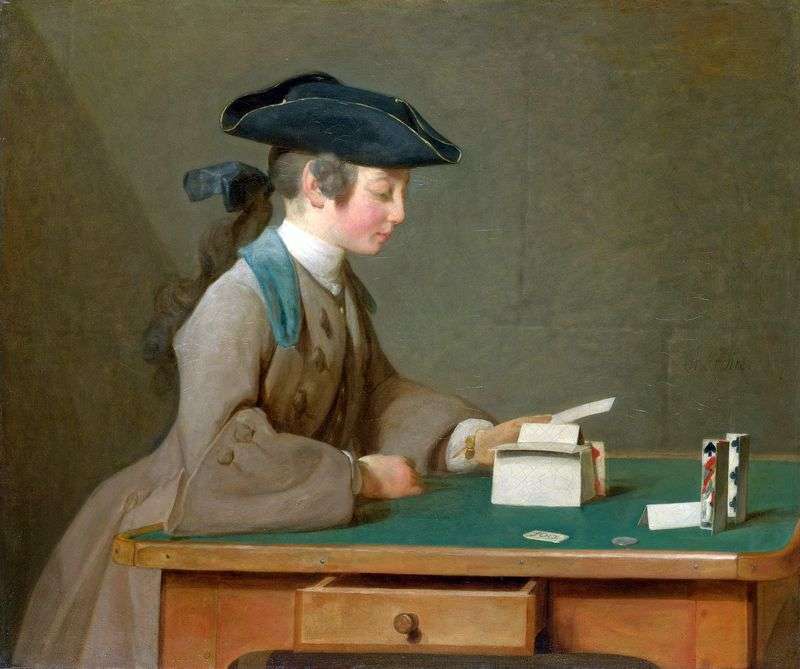 House of Cards by Jean Baptiste Simeon Chardin
House of Cards by Jean Baptiste Simeon Chardin Monkey Artist by Jean Baptiste Simeon Chardin
Monkey Artist by Jean Baptiste Simeon Chardin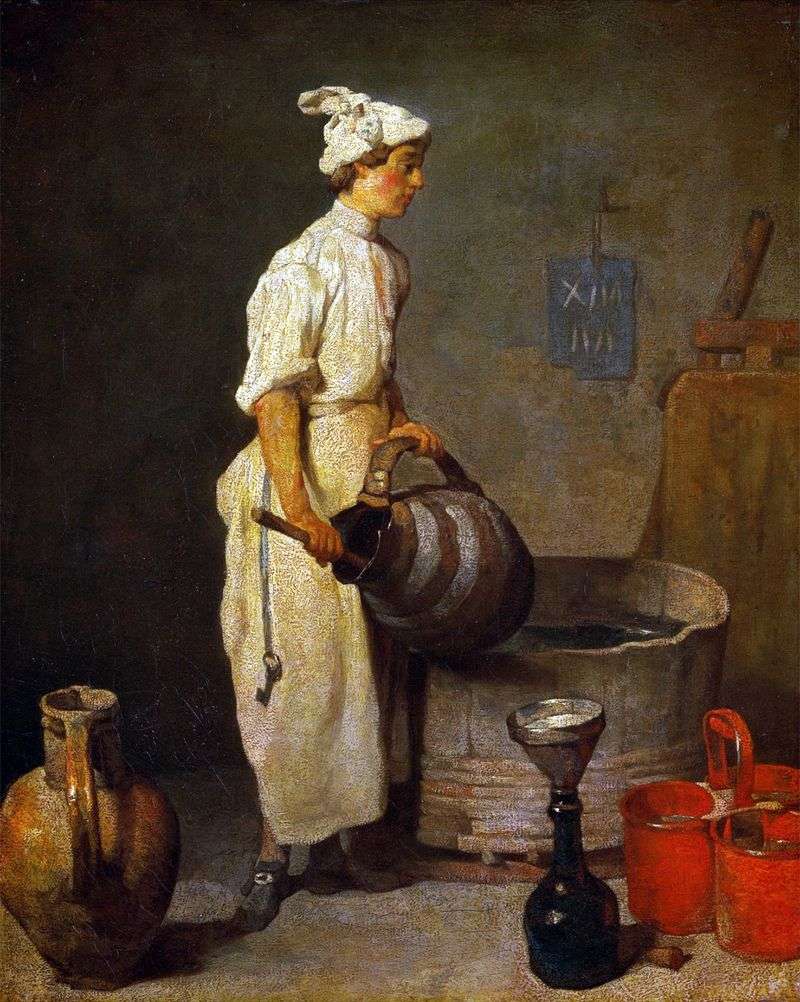 In the basement by Jean Baptiste Simeon Chardin
In the basement by Jean Baptiste Simeon Chardin